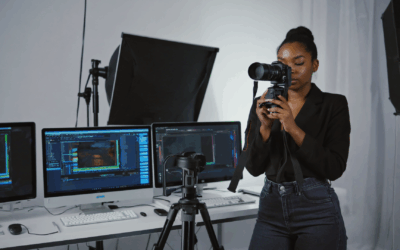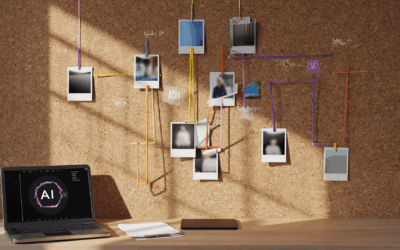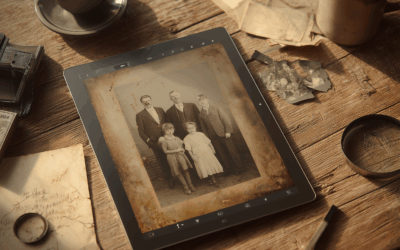Ethical Considerations in AI Photography
Introduction
The intersection of artificial intelligence (AI) and photography has opened a new frontier of creativity and innovation. From AI-generated images to advanced editing tools, the capabilities of AI in photography are both exciting and daunting. As this technology evolves, the ethical considerations surrounding its use become increasingly critical. Key terms such as AI deepfake detection, ethical AI image editing, and AI-generated art regulations emerge as vital components in navigating this complex landscape.
The Rise of AI in Photography
Understanding AI Technologies in Photography
AI technologies in photography encompass a range of tools and techniques that leverage machine learning and neural networks to enhance, generate, and manipulate images—most notably GANs for image synthesis and advanced algorithms for automated editing.
The Impact of AI on Creative Industries
Traditional photographers now face AI-generated art challenging their roles. For example, AI artists like Refik Anadol create visually stunning pieces, blurring lines between human and machine creativity.
Case Studies
- Portrait of Edmond de Belamy: An AI-generated portrait by Obvious sold for $432,500.
- DeepArt: An app turning photos into artworks in famed styles, democratizing artistic expression.
The Need for Ethical Frameworks
As AI expands in photography, clear ethical guidelines must protect both creators and consumers, addressing new challenges these technologies pose.
AI Deepfake Detection: Challenges and Solutions
What are Deepfakes?
Deepfakes use AI to create realistic but altered images or videos, risking misinformation and trust erosion.
Examples
- Political Misinformation: Manipulated content to mislead public opinion.
- Artistic Expression: Exploring identity themes through deepfake art.
The Role of AI in Deepfake Detection
Detection uses ML to spot inconsistencies—lighting mismatches, unnatural movements—but must evolve alongside deepfake advances.
Ethical Implications
Photographers must balance creative freedom with responsibility, ensuring their work does not contribute to misinformation.
Ethical AI Image Editing
The Line Between Enhancement and Manipulation
Enhancement improves visual appeal; manipulation alters reality. Crossing into misrepresentation raises ethical concerns.
Case Dilemmas
- NatGeo Cover Controversy: Overzealous editing led to authenticity debates.
- Influencer Marketing: Unrealistic AI alterations promoting unattainable standards.
Transparency in AI Image Editing
Disclose AI edits to maintain trust:
- Label AI-manipulated images.
- Educate audiences on AI’s capabilities and limits.
The Future of Ethical Editing
Expect robust regulations and industry standards as AI editing tools advance.
Copyright Issues in AI Photography
Understanding Copyright in the Digital Age
AI-generated works challenge traditional copyright: Who holds rights—developer, user, or no one?
Ownership of AI-Generated Art
Current legal precedents are sparse; debates continue over rightful ownership of AI-created images.
Navigating Copyright Ethically
- Respect original creators when using copyrighted inputs.
- Obtain permissions for source materials.
- Stay updated on evolving copyright laws.
AI Ethics in Photography: A Broader Perspective
The Role of Photographers in the Age of AI
Photographers must understand AI’s impacts and uphold integrity while integrating new tools.
Public Perception and Trust
Building trust requires transparency and open dialogue about AI’s role in image creation.
Trust-Building Strategies
- Promote clear disclosure of AI use.
- Engage audiences in ethical discussions.
Future Trends in Ethical AI Photography
Emerging trends will bring new ethical considerations; proactive engagement is essential.
Conclusion
The ethical landscape of AI in photography is complex and evolving. From deepfake detection to ethical editing and copyright, creators must commit to transparency, respect, and robust ethical frameworks. Engage in the conversation to shape a responsible future for AI-driven photography.
Frequently Asked Questions
Q: How can I detect AI deepfakes?
A: Use specialised detection tools that analyse lighting, texture inconsistencies and metadata anomalies.
Q: Should I label AI-edited photos?
A: Yes—clear labeling fosters trust and allows viewers to understand image context.
Q: Who owns AI-generated images?
A: Ownership laws vary; typically, the AI user or developer may claim rights, but legal precedents are still emerging.
Q: How do photographers maintain trust in the AI era?
A: By practising transparency, disclosing AI usage, and engaging in ethical discussions with audiences.




0 Comments